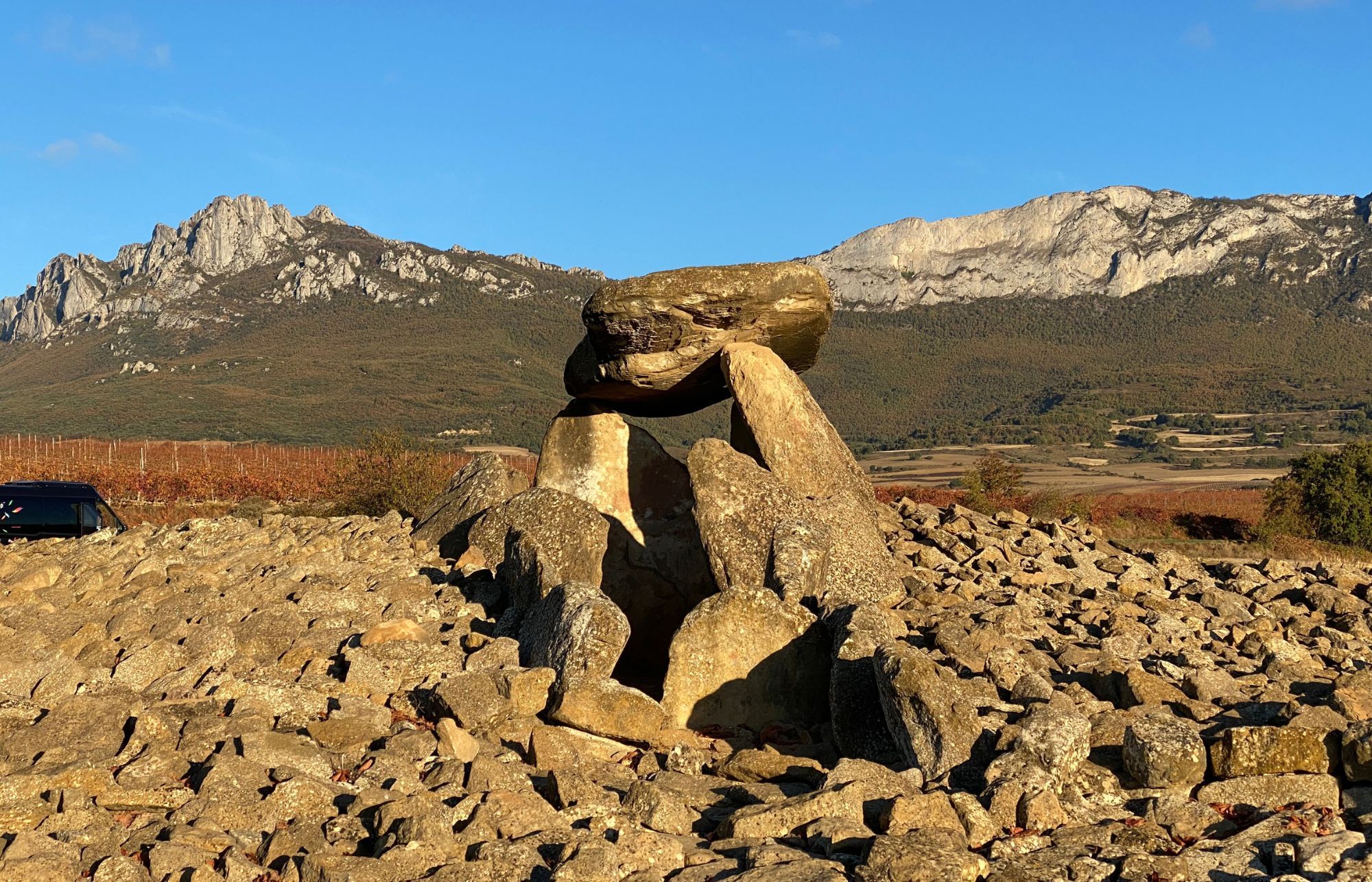We’re moving on to the final part of our deep dive into the often-overlooked diversity of Rioja. Parts one and two covered the larger regions of Alta and Oriental and within both I think we can all agree that Rioja, despite being one of the world’s most recognisable wine regions, doesn’t get enough credit for its depth of terroir, styles and exciting winemakers throughout its “100kms of Diversity”.
With the final article, we’re heading north, to the stunning landscapes of mountainous Rioja Alavesa. This zone has such a unique identity, and not just for its predominantly Basque culture. It sees a higher number of smaller wineries producing from a multitude of hand-worked plots across some of the most famous municipalities in Rioja. Despite its smaller size, Alavesa is a perfect showcase of Rioja as the “Land of 1000 Wines.”
Where Is Rioja Alavesa?
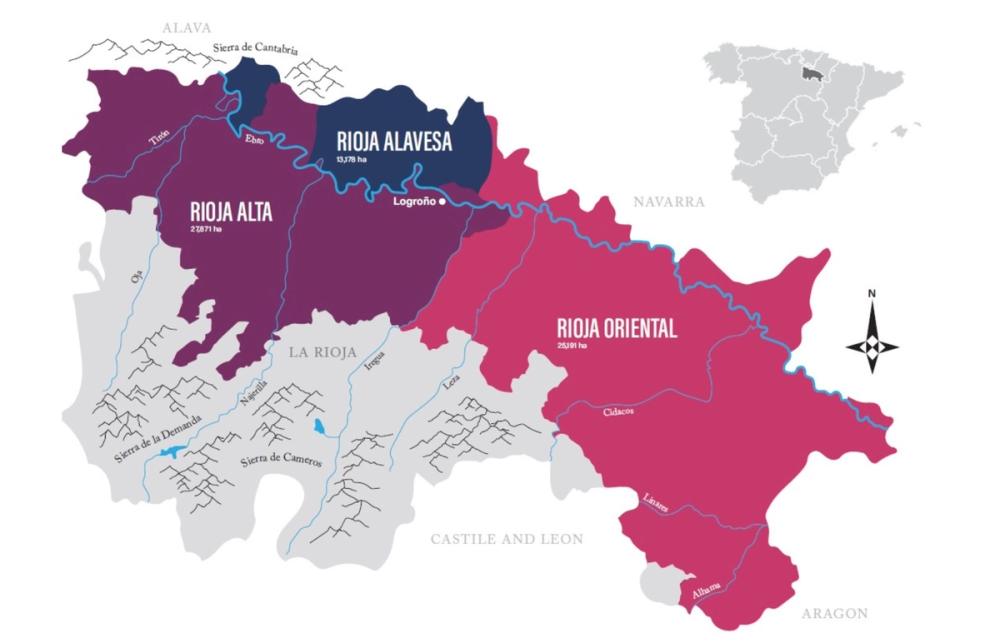
Rioja Alavesa is the smallest of Rioja’s zones, covering just 13,000 hectares of Rioja’s 66,000. North of the Ebro River, the land rises into the Sierra de Obarenes and the Sierra de Cantabria mountain ranges that dominate the landscape. This famously rugged terrain is in the Álava province, within the Basque region of Spain.
The fabulous wine writer, presenter and a guru of all things Spain, Sarah Jane Evans MW, suggests in her book, ‘The Wines of Northern Spain’, that “the best way to enter Rioja is to fly to Bilbao in the North and travel down through these majestic mountains as the rest of Rioja unfolds in front of you".
Due to existing political divisions, the vineyards of Rioja north of the Ebro are divided into three areas, with the western and eastern parts making up Rioja Alavesa, and the central Sonsierra district part of Rioja Alta. Laguardia, the capital of Rioja Alavesa, is in the eastern side which includes a significant number of small bodegas that break the trend of the larger producers that have dominated in Alta or Oriental.
Mountains dominate the climate

David Sampedro with the Foehn effect noticeable in the background
The climate of Rioja Alavesa is often generalised as Atlantic, with cool and wet influences from the nearby Atlantic Ocean. The Sierra de Cantabria does protect from the worst of the weather systems, but gaps in the ranges allow for Atlantic influences to sneak through. The mountains also produce the picturesque Föhn effect as cold, humid air from the ocean hits the mountains. This produces dense clouds at the peaks and favourable, warming winds that flow down the mountains on the other side, adding unique aromas and structure to the grapes in those vineyards.
If we only look at the average measurements for each of the three zones, Alavesa is the coolest zone. That, however, doesn’t tell the full story. The climate of Alavesa is much more uniform than the other two zones, with the main difference in climate being the altitude of the plots, from the Ebro basin at 400m to around 700m (a handful over 1000m) as grape growers explore the micro-climates at higher altitudes.
Oscar Cardenas is one of the winemakers at both Luis Cañas in Villabuena de Alava, and Amaren in Samaniego. “In 1979 we planted the first vines on higher sites in Cristo de Samaniego, about one kilometre north of Samaniego,” says Cardenas. “Planting at 570m was seen as madness at the time, but it’s turned out to be visionary.”
The foothills of the Sierra de Cantabria, as well as the easterly Sierra de Codés and Sierra de Toloño, not only allow for higher vineyard sites, but also a range of slopes and aspects. Experimentation with north facing slopes to protect grapes from the glare of the summer sun has led to crops of fresh, healthy grapes collected at the end of extended harvest periods.
Prized pockets of white gold

Clay and limestone soils are common in the region
The soils are noticeably rich in limestone. A quick satellite view on Google Maps (other search engines are available) will show the white-yellow reflections compared to the red, iron-rich ferrous clays to the south. These soils are poor, low in organic content and slow to drain. The rocky, fragmented substructure allows roots to grow deep in search of precious water and nutrients, leading to red and white wines of fabulous personality from the area once referred to as “Rioja’s Côte D’Or”.
As the altitude increases, however, the soils become less uniform. David Sampedro, who runs Bodegas Bhilar in Elvillar, uses these differences to his advantage.
“We can produce 17 different wines across our handful of hectares,” says Sampedro. “The soils here are very different between the 600m to 700m band where our vineyards lie. Across all our plots we have clay, limestone, sandy and alluvial.”
Sampedro plans to test sites even higher, with plans for vineyards at 900m as the experimentation for the next top-quality wines of Rioja Alavesa continues.
What is very difficult is that these soils need to be cultivated over irregular terrain. The vineyard plots of Rioja Alavesa are notoriously small, often terraced, and demand hard manual labour. Clara Canals is the head winemaker at the impressive Bodegas Ysios.
“We own six hectares, and manage 40 more, but these are split over 50 plots,” explains Canals. “All of our plots are dry farmed, bush trained and hand-picked.”
What do the recent rule changes mean for Rioja Alavesa?
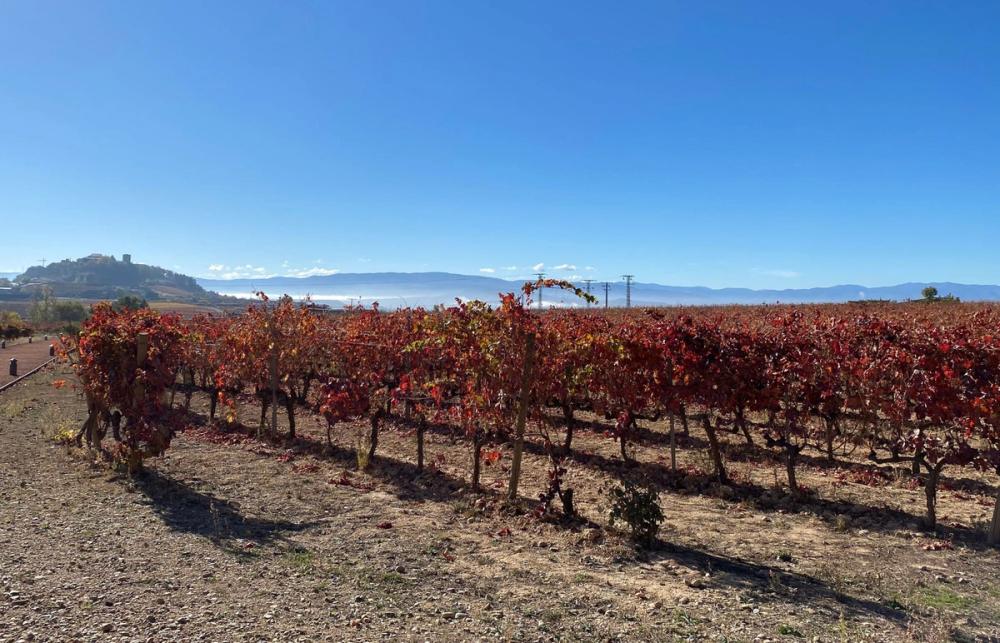
Smaller plots dominate production in Rioja Alavesa
The 2017 updates of labelling laws, including those of Vinos de Zona, Vinos de Municipio and Viñedos Singulares, work well in Rioja Alavesa.
Producers in this smaller, yet fiercely proud zone of Rioja, not only have the option to distinguish wines from Alavesa, but also from its 18 famous municipalities, including Laguardia, Elvillar and Labastida.
“As long as 85% of the vines are in Elvillar then that works for me,” says Sampedro, “and it’s a view I think shared by many in the Basque side of Rioja.”
The Basque identity of many of the people and producers in Alavesa is very evident, but their wines remain proudly from Rioja. Simon Arina Robles runs Bai Gorri, whose vineyards are all north of the Ebro, and straddle both Alta and Alavesa.
“One side of the road is Alta, one is Alavesa, but do the vines really know where they are?” asks Arina Robles. “Rioja has the options for anyone, whatever style they want to produce.”
Some of the new rules don’t work quite as well for Alavesa as yet. The requirement to have 35 years of age for Viñedos Singulares excludes some most exciting vineyards for now, as many are recent plantings on higher slopes. But the smaller nature of the plots, the manual work ethic and the widespread use of micro-vinification would point to increased numbers labelled as such soon.
Grape varieties
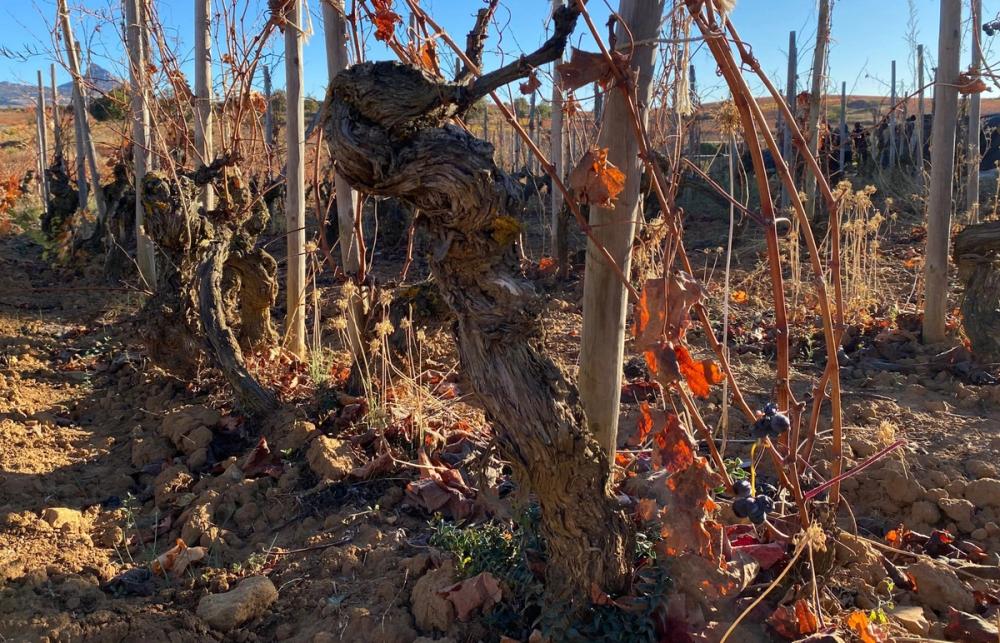
Gnarled old vines are a mark of Rioja Alavesa
Tempranillo remains the most planted variety in Rioja Alavesa with cooler sites suiting this early budding, early ripening variety. “The best Tempranillo is in Alta or Alavesa,” says Arina Robles, “the terroir just suits it that way.”
As with the other two zones of Rioja, however, the other major red varieties of the region are increasing in plantings. This is especially true of higher altitude sites in the likes of Ábalos, Lanciego, Leza, Elvillar, Kripan, and Samaniego, with Garnacha, Graciano and Mazuelo all seeing plantings of late-harvest, bush vines on low yielding and harsh terrain, but to great effect.
Rioja Alavesa is also the setting for one of the most intense investigations into the future varieties of Rioja. Oscar Cardenas is one of the winemakers at both Luis Cañas in Villabuena de Alava, and Amaren in Samaniego. “We have plantings in Villabuena de Alava, Leza and Baños de Ebro at around 480-520m,” revealed Cardenas. “Now we will only plant higher than that, so we need to explore not only new sites but also new grape varieties.”
Of course, their work includes deep dive clonal research into Tempranillo and Garnacha, but also into rediscovered varieties from Rioja’s past. “We have great hopes for Benedicto which shows fresh pH in the warmth and great levels of terpenes,” continued Cardenas. “But it’s not new. Anyone with Tempranillo vines over 80 years will definitely have some Benedicto in there too.”
Fine white wines
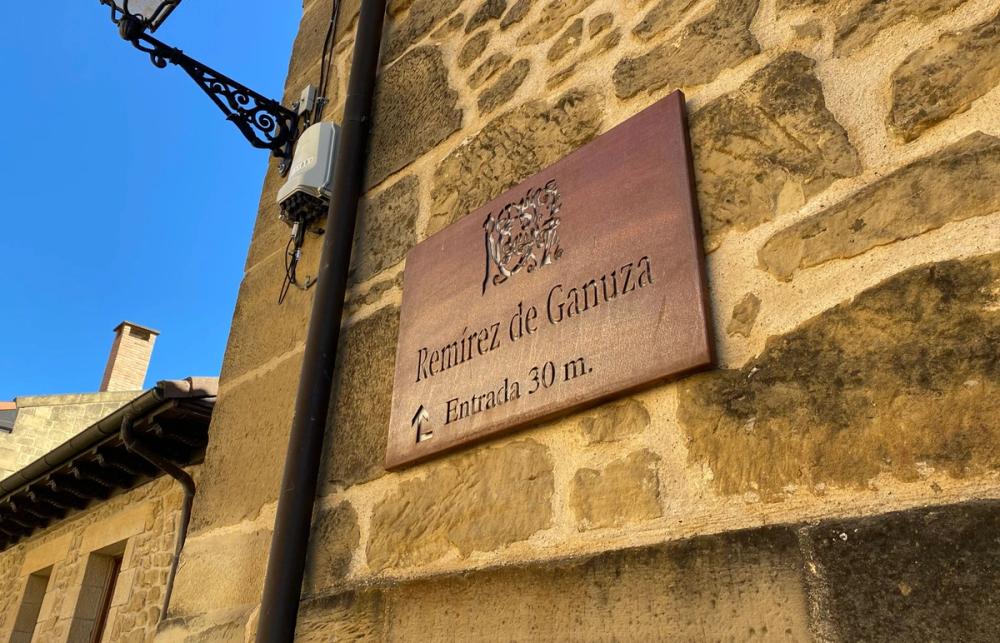
Ramirez de Ganuza in the old town of Samaniego
The thin, limestone soils of Rioja Alavesa lend themselves beautifully to the production of white wines. Once again dominated by Viura and supported by Malvasia, Maturana Blanca and Garnacha Blanca, Alavesa contains prized pockets of old vines that have seen producers become champions of White Rioja.
Remirez de Ganuza is based in Samaniego, and the team are very clear about the specifics of the grapes they’re looking to source.
“We’re now looking specifically for old vine white varieties at altitude for our top Gran Reserva Blanco,” explains brand manager Leylie Martinez. “Our Reserva and Gran Reserva Blancos are only from vines over 60 years old.”
Martinez continued that although you can source the grapes, you can’t buy these vineyards anymore as increasing numbers of producers make use of this complex and concentrated fruit to produce truly fine white wines.
How to get a snapshot of Rioja Alavesa

Bodegas Ysios in Rioja Alavesa
We’ll finish, as ever, with what to do for those wishing to visit Rioja Alavesa. This zone of Rioja really has become an international benchmark in wine tourism, with all major wineries and visitor destinations a short drive from Logroño.
For those of us in the wine trade, Alavesa is the zone of the designer winery. The municipality of Elciego is home to wonderful architectural display of Marques de Riscal and its ‘City of Wine’ visitor centre. Also, well worth a visit (and a photo or ten) are the iconic waves of Bodegas Ysios, a stone’s throw north of Laguardia.
Speaking of Laguardia, the zone’s capital is one of the beautiful, walled medieval towns in the region, which is definitely worth a stay to visit some of the 50 or so wineries that call it home. Continuing with the theme of historical sites, Alavesa is also the proud home of a series of ancient, megalithic monuments, such as the Dolmen of Chabola de la Hechicera; a perfect place to stop off and reflect on the beauty of the landscape that surrounds you.
* For more information about the regions, wines and winemakers mentioned in this article, as well as more information on visiting Rioja Alavesa, please contact the Rioja Wine UK team on Rioja@thisisphipps.com.
* The Rioja Somm’er School 2024 will take place between June 24-27. Eight UK sommeliers will visit the region for an educational trip and have the opportunity to visit leading wineries across the region’s three zones, meet with pioneering producers and discover both traditional and newer styles of wine being produced in the region.
* To learn more about Rioja and its wines, visit the Rioja Wine Academy, a fantastic online platform offering free educational courses for trade and consumers alike. There are six courses available on the platform from introductory courses right through to the Rioja Wine Diploma, which covers everything from grape varietals to styles of wine, regulations on viticulture to gastronomy and history. To register for a course, head to riojawineacademy.com.
* Mike Turner is a freelance writer, presenter, educator, judge and regular contributor for The Buyer. You can contact him at mike@pleasebringmemywine.com.
* Funded by The European Union.
